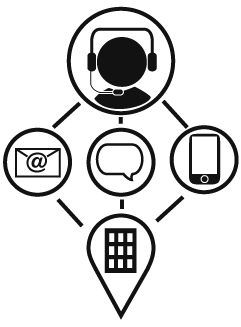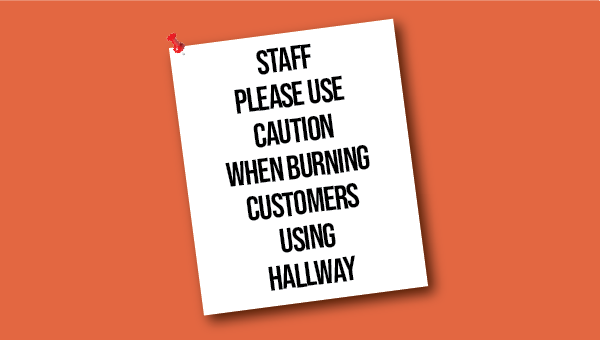10 tips for working remotely
Lightsource’s headquarters are in Old Town, Fort Collins. While most of our staff enjoys Colorado living, we have long supported working remotely. For over 10 years, full-time team members have worked in cities ranging from Boston to Rome, Seattle to Philadelphia, and lots of places in between. We are not unique anymore when it comes to a mobile work environment. According to CNN, the number of Americans working from home has soared 41% in the last decade. Here are our top 10 tips for creating a successful experience for you, your team, and your employers.
1. Set up an office space
Find a spot in your home that is purely for work-related business. If you don’t have an extra room in your house for business-use, find at least a quiet niche that contains all of your necessary equipment, such as your computer, monitor, phone, printer, etc. Preferably it is located in an area that you can walk away from “after hours.” If room is just too tight at home, there are low-cost, fully furnished, co-working office spaces available for rent.
2. Accumulate the right tools

Utilize resources to stay engaged with your team and do your job well. At Lightsource, we rely on a variety of communication devices to stay in touch with one another. We live on Instant Messenger; even the employees who sit three feet from one another, use IM to ask questions and give status updates. We have Internet-based VoIP phones for conference calls. Our daily staff meetings and brainstorm sessions are on Skype. We maintain central repositories (Dropbox, Smartsheet, Google Drive) for files and timelines that all team members need to access, and we have an online project management system to assign tasks and track time.
3. Do not live on email alone
Despite all the interactive tools mentioned above, email is still king when it comes to business communications. At Lightsource, we send and receive hundreds of emails daily. For many remote employees, a day could go by without ever having to speak aloud. Try to avoid that. Look for ways where live chats can happen. Make sure people see your face and remember that you are a real-life human being, not just someone whose name appears in their inbox.
4. Do not disappear
Let managers know where projects are headed. Don’t allow yourself to be forgotten at meetings. Know the meeting schedule, when key events are happening, and show up. Don’t opt out because “people won’t even know if you have dialed in or not.” You are a part of the team and have something to contribute, if not on the call but in follow-up discussions.
5. Go with the flow
We have come a long way from dial-up connections, production calendars on Post-it notes, and word processors; however, technology is still not perfect. There will be times a Skype meeting drops, email goes belly up for an hour, and a conference call line is full of static. Do not pull out the “woe-is-me-I-work-remotely” card. Everyone in and out of the office faces tech issues, and backup plans are necessary. Find good tech support near you. Use remote desktop-viewing applications to let your IT team at the home office run maintenance. Suggest an alternative means of communication. Bottom line, don’t be the person who keeps saying, “I can’t hear you. I can’t do this. It’s not working.” Or, you will talk yourself out of your remote status and your team members won’t see the benefits either.
6. Get out of the house
Look for opportunities to break up monotony and stay active. Go grab a coffee and do some work there. Pick up takeout when the rest of the team goes out for a birthday celebration. Run an errand to the post office. At the very least, get up and walk around. It is very easy to stay within the four walls of your home office and never see the light of day, even after work hours. Exercise and being out among people can help refuel your creative juices, and studies show both activities help boost productivity.
7. Go visit
Seek opportunities to go to the main office or meet up with colleagues when possible. Face-to-face meetings every quarter, or a couple of times a year, help get everyone on the same page. Of course, frequency will depend on your budget and schedule.
8. Establish office hours and dress for success
Don’t let your job take over your home life 24/7. A recent study by Stanford University found home-based employees worked 9.5% longer than office workers and were 13% more productive. You will hear the phone ring late at night, or you will see the glow of the computer screen under your office door and think, “Oh, maybe I should just take one more peek at email before I go to bed.” Try to resist the temptation around you to work all the time. Also, get out of your pajamas, even if a Skype call is not on the docket for the day. However, take advantage of one perk: working in bare feet without offending co-workers.

9. Find quality childcare
There is a perception in some circles that telecommuting is the “perfect job” for parents with young children. This cannot be further from the truth. As any parent knows, the moment you get on the phone is the precise moment your child needs your attention now, or it is the perfect opportunity for them to douse your living room with flour. Find reliable childcare that you can depend on, just as you would if you worked in an office.
(Image link: http://www.friendshipcircle.org/blog/wp-content/uploads/2013/05/Busy-Mom…)
10. Appreciate the fact that it is 2014, and that this arrangement is possible
Not only are great tools available, but there has been a shift in the public perception of remote employees. Many employers recognize that productivity can increase with fewer interruptions (no cubicle chatter, snow days, long lunches out, or commuting). They are left to simply hire the best talent, which means they can go global. The key is staying engaged, contributing, and remembering you are a valuable member of the team.

























